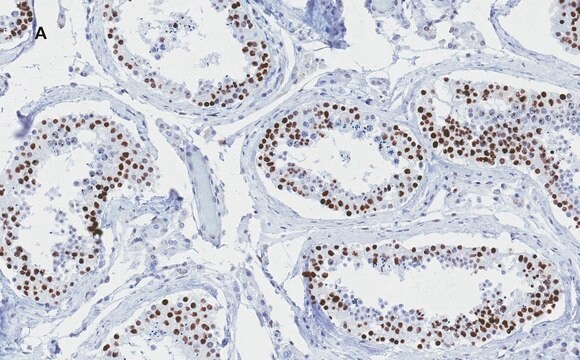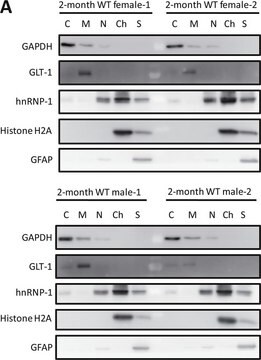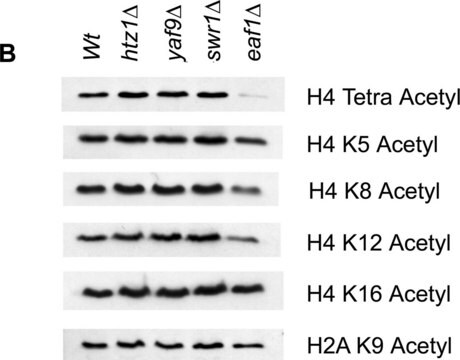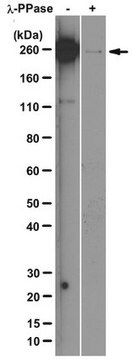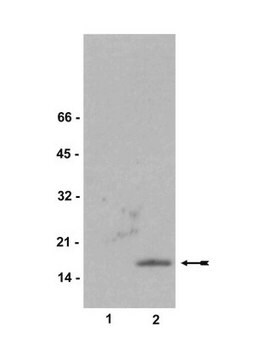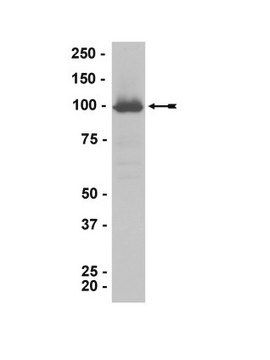07-745-I
Anti-phospho Histone H2A (Ser129) Antibody
from rabbit, purified by affinity chromatography
Synonim(y):
Histone H2A.1
About This Item
Polecane produkty
pochodzenie biologiczne
rabbit
Poziom jakości
forma przeciwciała
affinity isolated antibody
rodzaj przeciwciała
primary antibodies
klon
polyclonal
oczyszczone przez
affinity chromatography
reaktywność gatunkowa
yeast
metody
dot blot: suitable
immunocytochemistry: suitable
immunoprecipitation (IP): suitable
inhibition assay: suitable (peptide)
western blot: suitable
numer dostępu NCBI
numer dostępu UniProt
Warunki transportu
wet ice
docelowa modyfikacja potranslacyjna
phosphorylation (pSer129)
informacje o genach
Saccharomyces cerevisiae ... Hta1(851811)
Opis ogólny
Specyficzność
Immunogen
Zastosowanie
Immunoprecipitation Analysis: A 1:100 dilution from a represenetative lot immunoprecipitated phospho Histone H2A (Ser129) from yeast extracts.
Immunohistochemistry Analysis: A 1:1,000 dilution from a lot detected phospho Histone H2A (Ser129) from yeast cells.
Epigenetics & Nuclear Function
Histones
Jakość
Western Blotting Analysis: 0.02 µg/mL of this antibody detected an increase in signal for phospho Histone H2A (Ser129) in MMS treated yeast nuclear extract over untreated yeast nuclear extract.
Opis wartości docelowych
Postać fizyczna
Przechowywanie i stabilność
Inne uwagi
Oświadczenie o zrzeczeniu się odpowiedzialności
Nie możesz znaleźć właściwego produktu?
Wypróbuj nasz Narzędzie selektora produktów.
Kod klasy składowania
12 - Non Combustible Liquids
Klasa zagrożenia wodnego (WGK)
WGK 1
Temperatura zapłonu (°F)
Not applicable
Temperatura zapłonu (°C)
Not applicable
Certyfikaty analizy (CoA)
Poszukaj Certyfikaty analizy (CoA), wpisując numer partii/serii produktów. Numery serii i partii można znaleźć na etykiecie produktu po słowach „seria” lub „partia”.
Masz już ten produkt?
Dokumenty związane z niedawno zakupionymi produktami zostały zamieszczone w Bibliotece dokumentów.
Nasz zespół naukowców ma doświadczenie we wszystkich obszarach badań, w tym w naukach przyrodniczych, materiałoznawstwie, syntezie chemicznej, chromatografii, analityce i wielu innych dziedzinach.
Skontaktuj się z zespołem ds. pomocy technicznej